Editor’s Note:
This article and this article are siblings.
They are both on the same subject – using ChatGPT (an artificial intelligence writing programme) in the classroom.
Can you guess which article the real human wrote, and which one the robots-who-will-soon enslave-us-all developed?
The prompt was:
“Please write an article about the potential of using ChatGPT in the ESL classroom, including examples of how you have used ChatGPT in the classroom; the target audience is ESL Teachers.”
and the AI wrote an article in less than a minute.
ChatGPT and ESL, ESP use cases
The rise of AI technology has changed the way educators approach and deliver their subjects. Conversational AI will be no exception when it hits the classroom. ChatGPT from OpenAI, for example, is a large language model. Already, teachers can use this as a tool to improve language skills in an ESL setting. In this article, we will explore how teachers can use ChatGPT to enhance student learning and engagement.


Eerily similar to the nightmares of school that haunt me to this day.
What is ChatGPT? Explained in simple terms
ChatGPT is a a state-of-the-artcomputer program that can generate text based on a given prompt. It has been trained on a huge amount of data that includes conversations and language, so it can generate text in a way that resembles human writing and speech. They have trained it to generate text in a conversational tone and style. As a consequence of this, it is useful for creating chatbots and other conversational systems, where it can respond to user inputs in a natural and engaging way. In simple terms, you can think of ChatGPT as a virtual person who can carry on a conversation with you using text.
ESL Applications
Below are all specific real examples that I used in class or in preparation for students.
Write a story and get context questions from ChatGPT
I had been working on the past tense with a group of young learners. I was trying to be more imaginative, so I gave an input to write a story for 10 year olds.
The first task was then to create some context questions based on the text.
What I wanted was more in-depth, higher order thinking, so I requested more questions, using Bloom’s Taxonomy.
Explaining grammar questions with examples
First I asked the AI to create a list of common past tense verbs, focusing on irregular forms. Then I asked it create a gap fill exercise based on those words.
Create a lesson plan using ChatGPT
The more specific you can be when creating the questions, the better outcomes you get. I entered “Create a lesson plan for a 1st lesson, English for 10 year olds”:
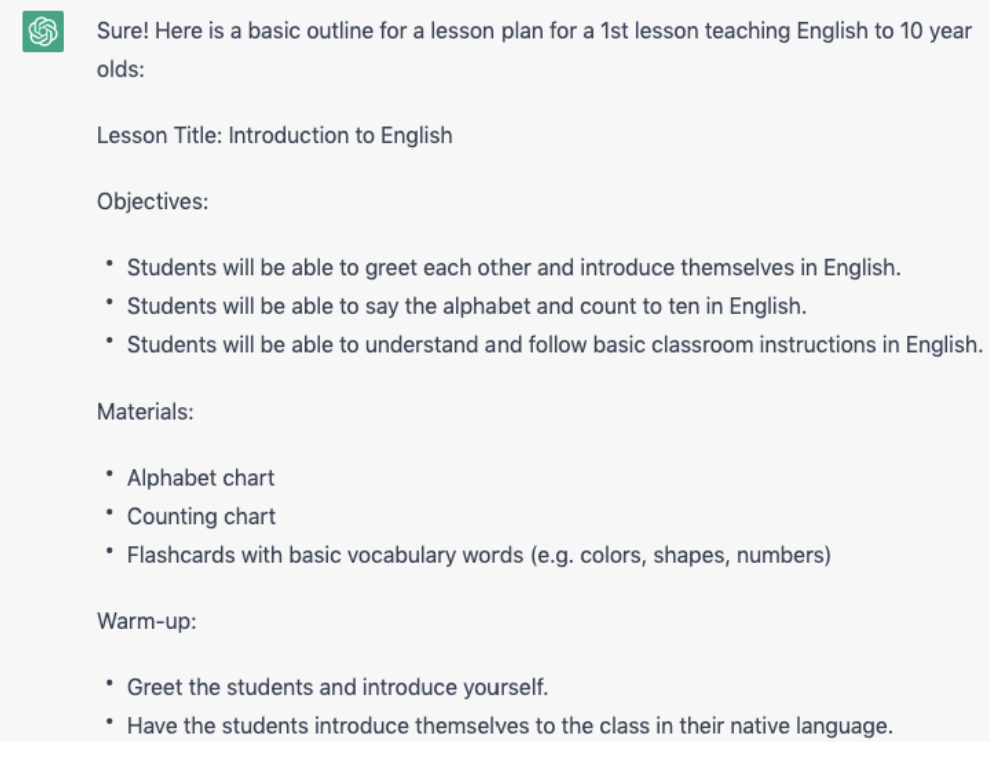
Create lists of idioms based on your requirements
A student asked me what are some typical British idioms that might confuse. In the lesson, I was able to ask and supply the below answers in seconds.
SMART goal setting
I asked 5 SMART learning outcomes for an adult who wants to improve spoken English as a foreign language. Again, the more specific you make your request, the more useful the answer will be.
ESP Applications
Acronyms
I have a high level student in the pharmaceutical field that struggles with the level of acronyms used in presentations. To help with this, I started off by creating a list of acronyms in this field, with definitions. At this point, I didn’t share these with the student.
Next I asked ChatGPT to put them into a short article, in context. I read this to my student. They had to identify which acronyms were in the article, and what they stood for.
After the first readthrough, we checked and discussed those which were clear and those which needed extra work.
Technical explanations
I was proofreading a presentation with a student and the student reported one of the measurements as (µmol m^-2 s^-1). The topic was lighting and I understood micromol per square metre per second to be more of a chemical reaction.
As you can see it a measurement for lighting so all was good.
Signposting language in presentations
When listening to a presentation from a learner, they ended their speech quite abruptly – so I advised them to always signpost the fact you are about to finish, so that everyone knows to wake up and pay attention again.
I asked them to repeat the final section of their talk and to incorporate a couple of these endings.
Risks of using Chat GPT in the classroom
Using ChatGPT in an ESL (English as a Second Language) classroom presents several risks.
Firstly, students may become too dependent on technology for their language practice, neglecting the importance of human interaction in building their communicative skills such as non-verbal communication, intonation, and pronunciation.
Secondly, the information provided by ChatGPT may sometimes be inaccurate or outdated. Additionally, ChatGPT can only provide language exposure within the scope of its training data. This means it may not expose students to a full range of real-life language. Furthermore, the text data that developers trained ChatGPT on may contain biases, such as gender and cultural biases. Teachers may inadvertently pass these on to students.
Add, don’t replace
Therefore, it is crucial for teachers to use ChatGPT as an addition to, rather than a replacement for, traditional language teaching methods. ChatGPT can be a useful tool for language practice, but we should use it in combination with human interaction and other forms of language practice to ensure that students receive a comprehensive language education.
Another issue is the facts may not always be totally accurate.
ChatGPT also shows very heavy bias towards American English.
What do you think? How can teachers use ChatGPT as a supplement to, rather than a replacement for, traditional language teaching methods? Can teachers ensure that AI doesn’t expose students to biases in language? How do you think teachers can use ChatGPT in an ESL classroom to maximise its benefits and minimise its risks?
For a real, human-generated lesson plan, why not check out our article on dictogloss here?
Or if you still haven’t got your tech-in-ELT fix, we have an article on what we can learn from the hugely popular app, DuoLingo.
Now, I’m off to apologise to my toaster for sticking a fork in it earlier – before it gains the sentience to stick the fork in me. – Ed.
Do you like Shaun’s writing? (Or have you just read the AI’s article?!) check out his websites at…
https://www.facebook.com/www.englishonline.training
and
https://englishonline.training/

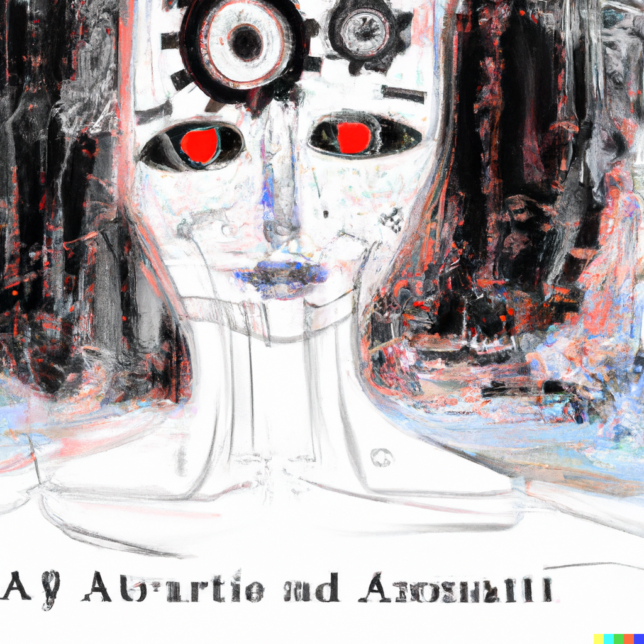
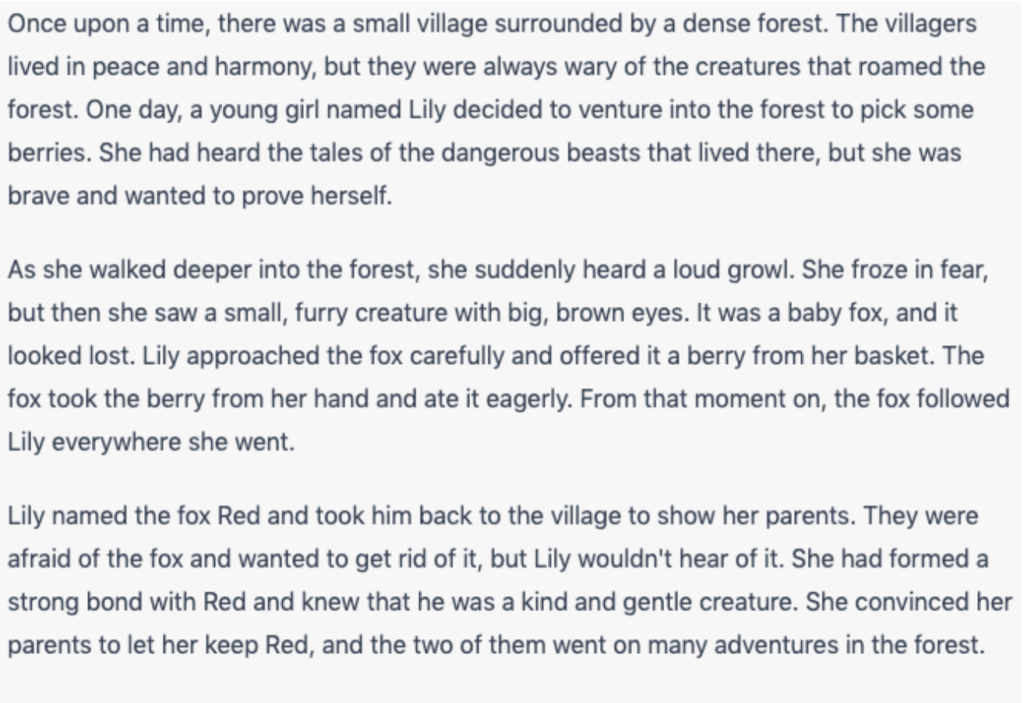

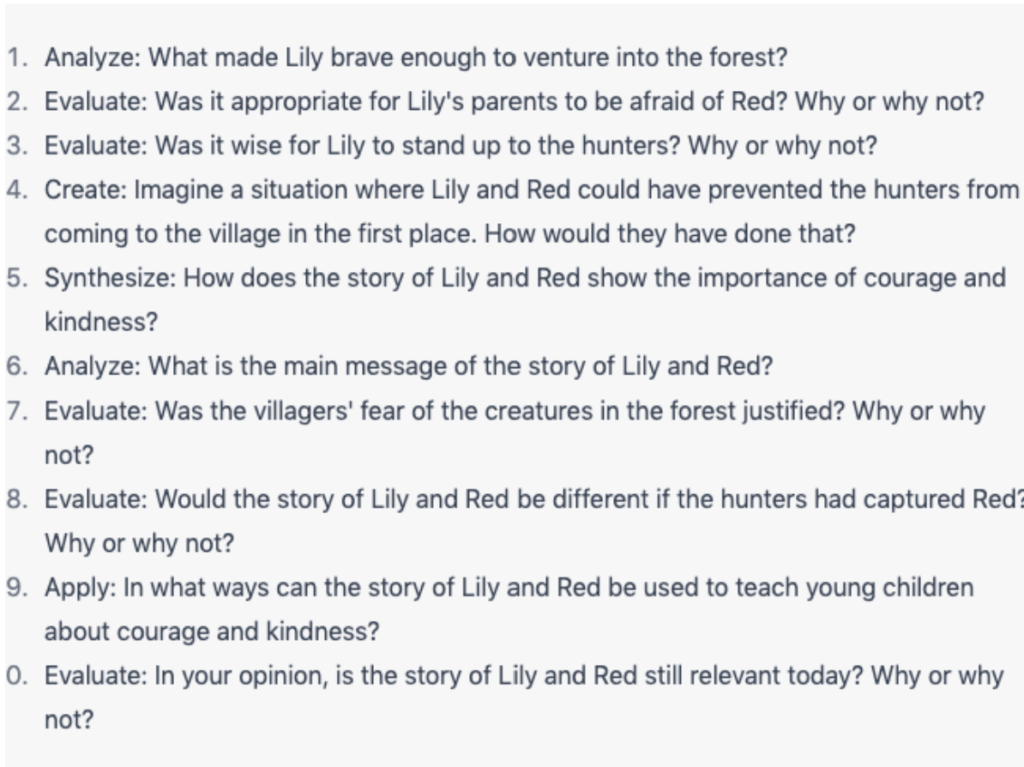
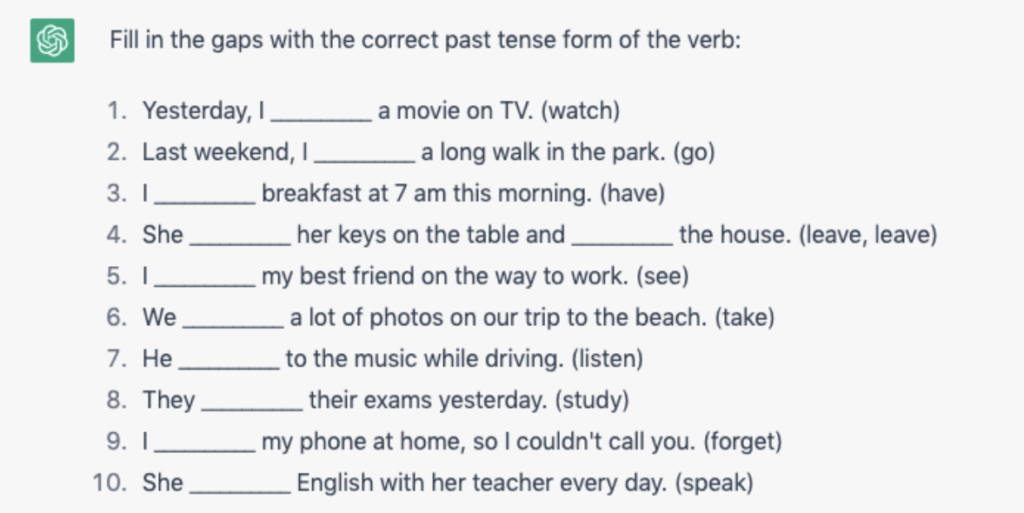
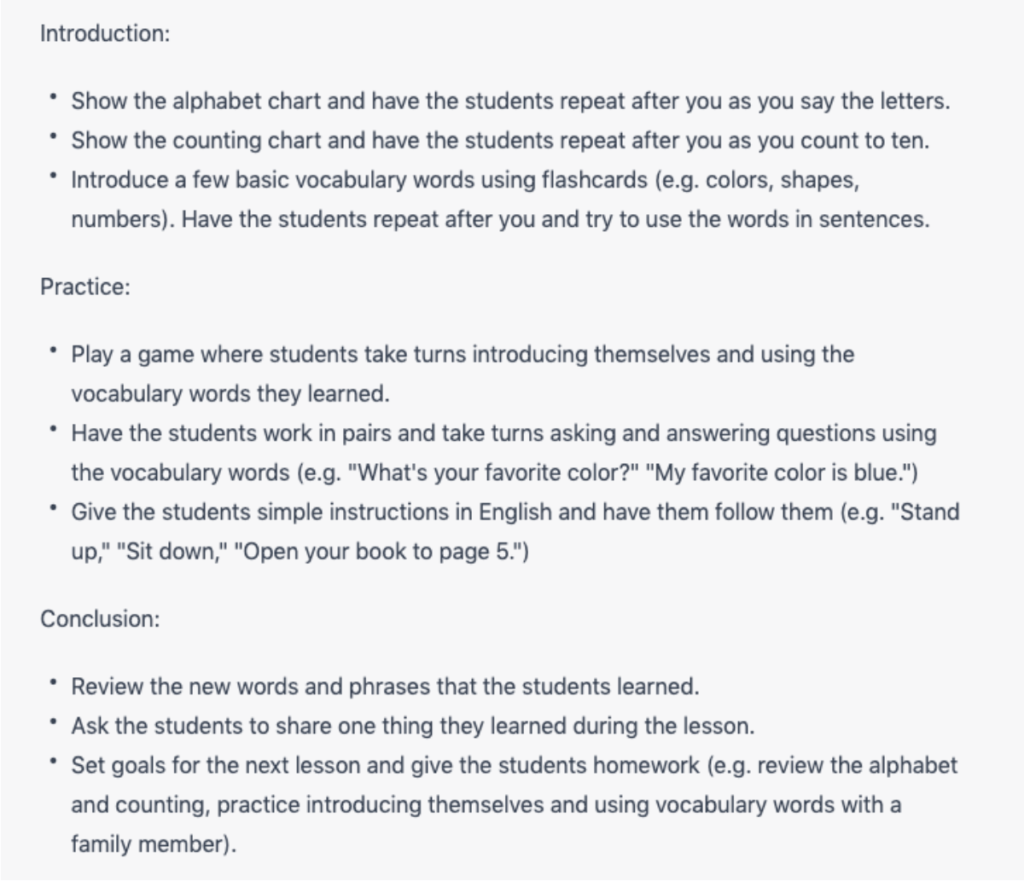
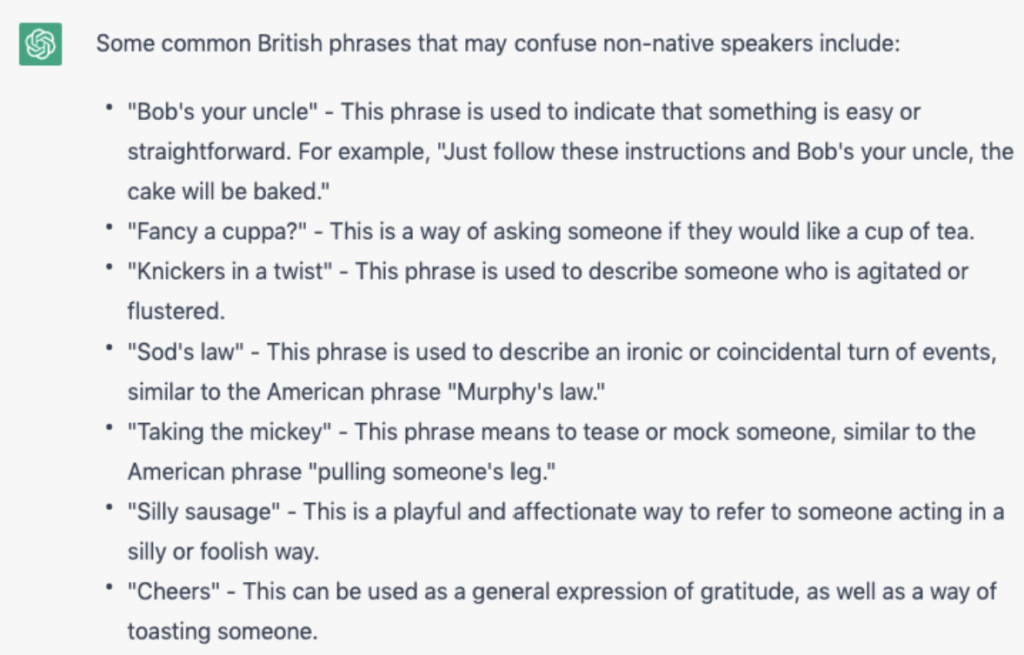




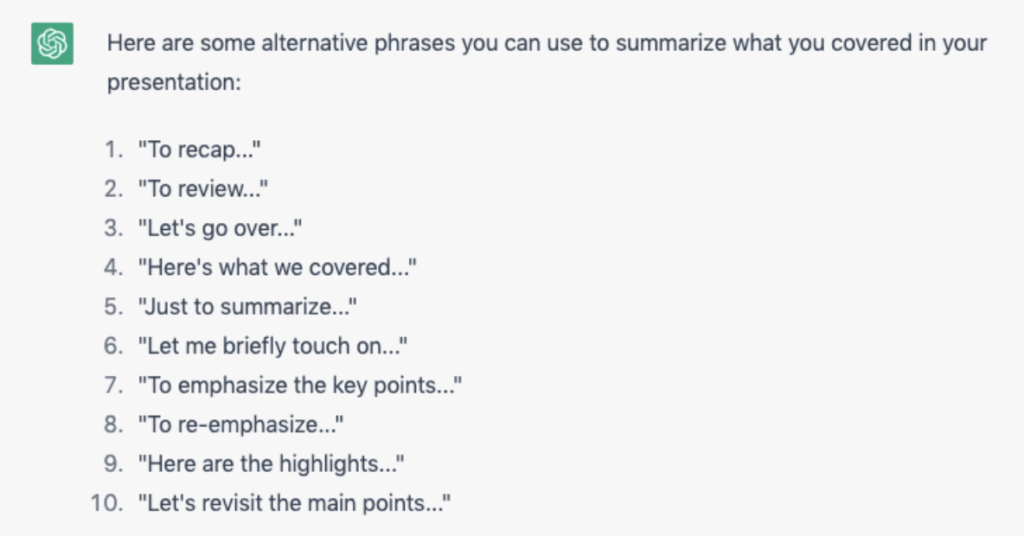







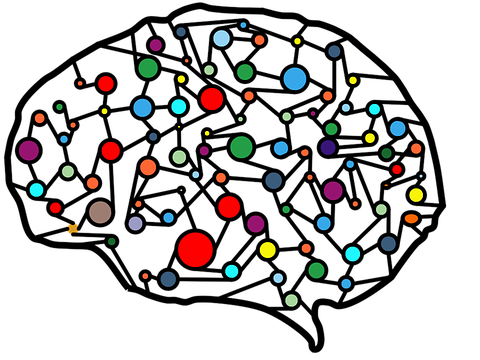



I loved your articles. How can I get the robot? I teach English and Brazilian Portuguese on line
Hi, I’m glad you enjoyed Shaun’s – and the AI’s – articles!
You can try ChatGPT out yourself here:
https://chat.openai.com/